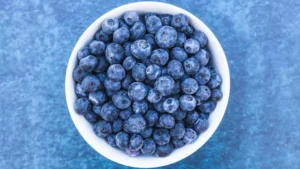Rice, a staple food for millions worldwide, is more than just a source of energy. It’s a versatile grain packed with nutrients that can significantly impact your overall health and fitness. Let’s delve into the hidden benefits of this humble grain and discover how it can contribute to a healthier, more vibrant life.
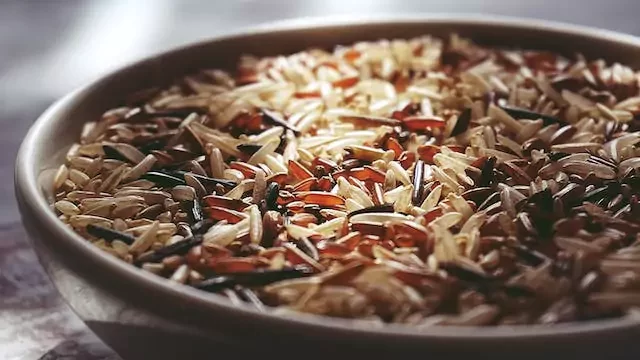
Types of Rice
- White Rice: White rice is the most widely consumed type of rice, characterized by its light color and fluffy texture. However, its nutritional value is lower compared to other varieties due to extensive processing. The outer bran and germ, rich in dietary fiber and essential micronutrients, are removed during processing.
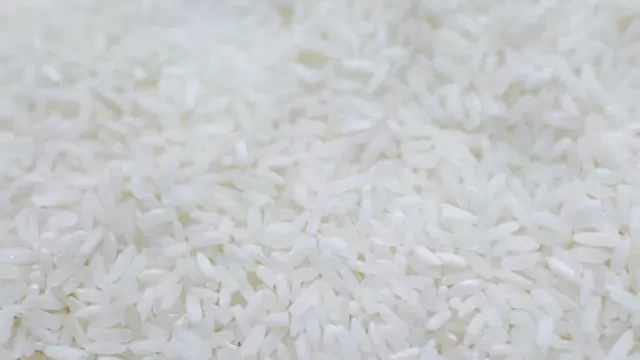
- Brown Rice: Brown rice stands out due to its whole-grain status, retaining the bran and germ layers. This results in a higher concentration of fiber, vitamins, minerals, and antioxidants. Fiber aids in digestion, promotes satiety, and regulates blood sugar levels. Vitamins and minerals support various bodily functions, including muscle growth and energy production. Antioxidants protect cells from damage caused by free radicals.
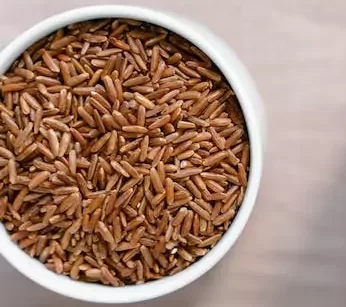
- Wild Rice: Wild rice, not actually a member of the rice family, is a nutritious alternative. It provides a higher protein content, along with plentiful fiber, making it an excellent choice for individuals seeking to enhance muscle mass and improve digestive health. The fiber also aids in weight management by promoting satiety and regulating blood sugar levels.
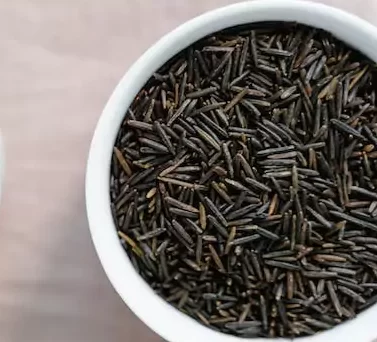
- Jasmine Rice: Jasmine rice, popular in Southeast Asian cuisine, is known for its distinct fragrance and slightly sticky texture. It is a good source of complex carbohydrates, providing sustained energy throughout the day. The fiber content aids in digestion and supports overall well-being. The delicate aroma enhances cooking dishes, making it a culinary favorite.
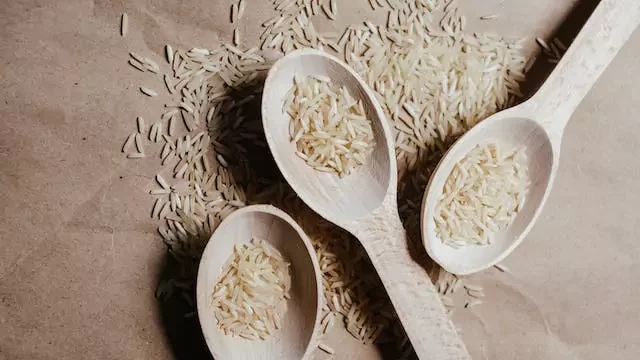
- Basmati Rice: Basmati rice, originating from India, is prized for its long, slender grains and aromatic fragrance. It is a good source of complex carbohydrates and fiber, providing energy and supporting digestive health. Its subtle flavor and fluffy texture make it a versatile ingredient in various cuisines.
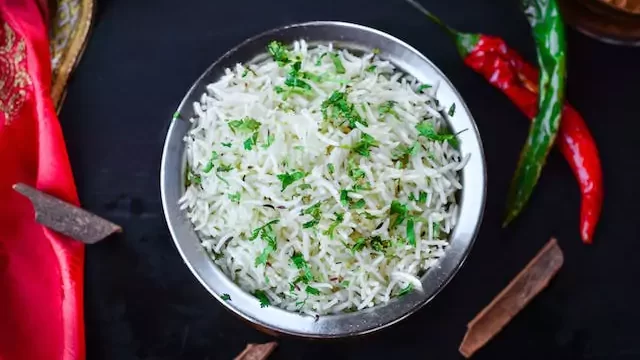
Benefits of Rice for Fitness
- Energy Source: Rice is a good source of complex carbohydrates, which provide sustained energy. This is important for athletes and active individuals who need energy for prolonged periods of exercise.
- Fiber: Rice provides dietary fiber, which aids in digestion, promotes satiety, and regulates blood sugar levels. Fiber also helps keep you feeling full after meals, which can help you control your calorie intake and prevent overeating.
- Nutrients: Rice is a good source of vitamins, minerals, and antioxidants, which are essential for overall health and fitness. These nutrients help support muscle growth and repair, boost metabolism, and protect cells from damage.
- Glycemic Index: Rice has a relatively low glycemic index (GI), which means it doesn’t cause a sharp spike in blood sugar levels after eating. This can be beneficial for people with diabetes or those who are trying to lose weight or manage their weight.
Choosing the Best Rice for Fitness
The best type of rice for fitness depends on your individual needs and preferences. If you’re looking for a low-calorie, low-fat option, brown rice is a good choice. If you’re looking for a rice that’s high in fiber and nutrients, wild rice is a good choice. And if you’re looking for a rice that’s versatile and easy to cook, jasmine or basmati rice are good choices.
Here are some additional tips for choosing rice for fitness
- Choose whole grains whenever possible. Whole grains are more nutritious than refined grains, such as white rice.
- Read the nutrition label carefully. Look for rice that is high in fiber and low in calories and fat.
- Cook rice according to package directions. This will help ensure that the rice is cooked properly and that it retains its nutrients.
- Serve rice with a variety of healthy toppings. This will help you get the most nutrients out of your rice and make it more enjoyable to eat.
Related: Best Meal to Eat After Training
The best time to eat rice for muscle
The best time to eat rice for muscle growth is post-workout. Consuming a meal rich in carbohydrates and protein after exercise replenishes glycogen stores in the muscles, which are depleted during physical activity. This replenishment is crucial for muscle growth and repair.
Brown rice, in particular, is an excellent choice for post-workout meals due to its high fiber content. Fiber promotes satiety, which helps you feel full and satisfied, preventing overeating and promoting muscle growth. Additionally, brown rice contains complex carbohydrates, which provide sustained energy throughout the day.
Here’s a sample post-workout meal that includes rice
- 1 cup of cooked brown rice
- 3-4 ounces of grilled chicken or fish
- 1 cup of mixed vegetables
Another ideal time to incorporate rice into your diet is before bed. Eating a small meal of rice before bed can help support muscle growth and recovery during sleep. Rice is a good source of carbohydrates, which provide the body with energy for muscle repair and growth. Additionally, rice is a slow-digesting carb, which means it provides sustained energy throughout the night.
Related: Sleep Tips
Here’s a sample pre-bedtime meal that includes rice
- 1/2 cup of cooked brown rice
- 1 tablespoon of almond butter
- 1 cup of berries
When choosing rice for muscle growth, it’s important to select whole grains. Whole grains, such as brown rice, retain the bran and germ, which are rich in fiber, vitamins, minerals, and antioxidants. These nutrients play a crucial role in overall health and well-being, and they can also contribute to muscle growth and recovery.
Nutrient Powerhouse: A Tapestry of Health Promoting Compounds
Rice is a nutritional powerhouse, brimming with essential vitamins, minerals, and antioxidants that play a crucial role in maintaining optimal health. Here’s a closer look at the key nutrients found in rice:
- Fiber: A dietary fiber powerhouse, rice provides ample fiber, which aids in digestion, promotes satiety, and regulates blood sugar levels.
- Protein: Rice contains a moderate amount of protein, contributing to muscle growth and repair.
- Vitamins: Rice is a good source of vitamins B1, B2, and B3, which are essential for energy production, metabolism, and nerve function.
- Minerals: Rice is rich in iron, potassium, manganese, and magnesium, which are crucial for maintaining healthy blood pressure, bone density, and nerve function.
- Antioxidants: Rice contains antioxidants such as anthocyanins and tocopherols, which protect cells from damage and reduce the risk of chronic diseases.
Unveiling the Impact of Rice on Health
The numerous nutrients in rice can translate into a range of health and fitness benefits:
- Supports Heart Health: Rice’s fiber content helps lower LDL (bad) cholesterol levels, reducing the risk of heart disease.
- Promotes Digestive Health: The fiber in rice promotes regular bowel movements and prevents constipation.
- Metabolism Booster: Rice provides energy without spiking blood sugar levels, making it an ideal choice for weight management and optimal metabolism.
- Blood Pressure Regulation: Rice’s potassium content helps regulate blood pressure, reducing the risk of hypertension and cardiovascular diseases.
- Brain Health Enhancement: Rice’s B vitamins play a vital role in brain function, memory, and cognitive health.
Conclusion
Rice, a staple food for centuries, has proven its value as a nutrient-rich grain that can positively impact overall health and fitness. By incorporating rice into your diet, you can reap a multitude of benefits, from supporting heart health and weight management to boosting brain function and digestive health. Remember to choose whole grains like brown rice for maximum nutritional value. Embrace rice and experience the transformative power of this humble grain on your well-being.
FAQs
Is brown rice healthier than white rice?
Yes, brown rice is generally considered healthier than white rice due to its higher fiber and nutrient content. White rice has undergone processing that removes the bran and germ, which contain most of the fiber and nutrients.
What are the different types of rice and their benefits?
There are numerous types of rice, each with its unique characteristics and benefits. Some popular varieties include:
- Brown rice: Rich in fiber, antioxidants, and complex carbohydrates.
- Wild rice: A higher protein and fiber option with a nutty flavor.
- Basmati rice: Long-grain rice with a delicate aroma and delicate texture.
- Jasmine rice: Fragrant long-grain rice with a slightly sticky texture.
How can I incorporate rice into a healthy diet?
Rice can be a versatile addition to a healthy diet. Try incorporating it into stir-fries, salads, soups, and even desserts. Experiment with different flavors and cooking methods to discover new and exciting ways to enjoy rice.
Are there any potential downsides of eating rice?
While rice is generally a healthy food, overconsumption can lead to certain drawbacks. Excessive intake may contribute to weight gain, especially if not paired with regular exercise. Additionally, some types of rice, such as white rice, have a higher glycemic index, which can raise blood sugar levels.



